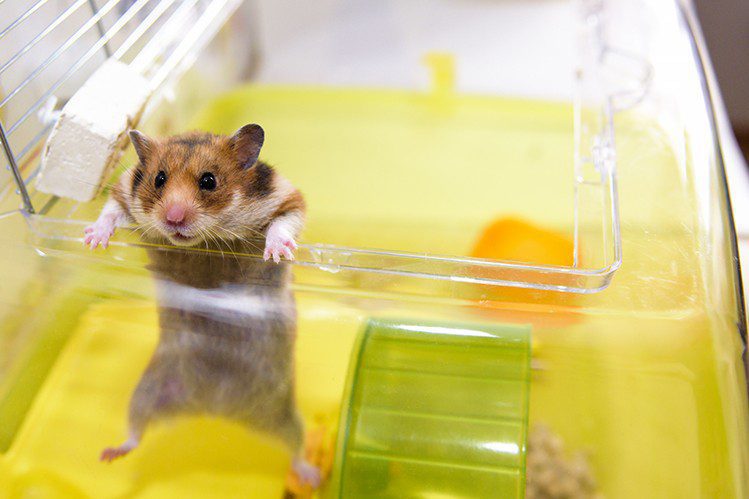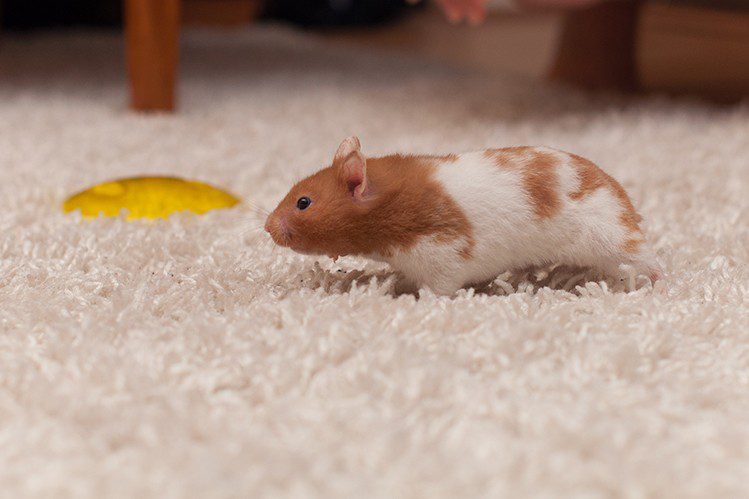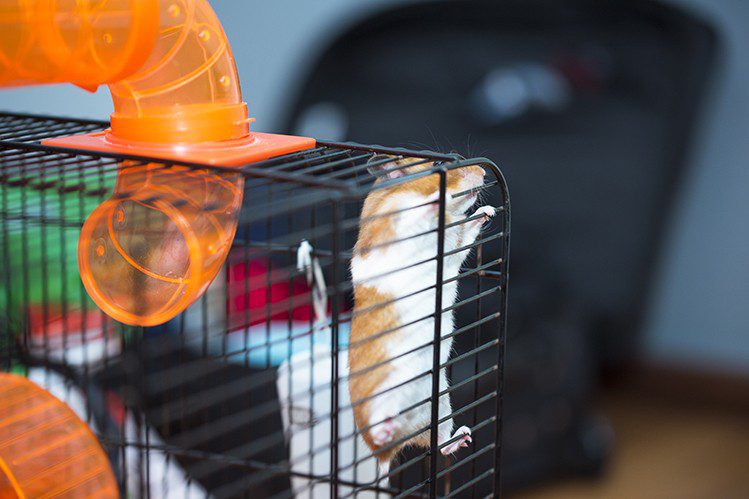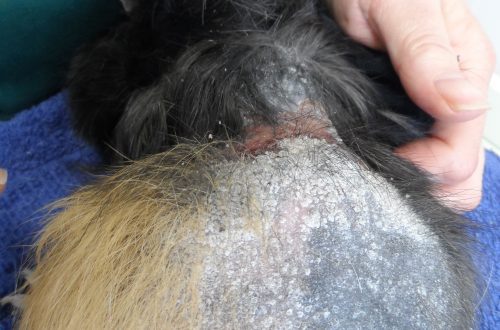
How to find a runaway hamster?
One day the hamster Mango was very bored in his cage. In order to somehow entertain himself, he began to play with the shiny door – stand on it with his paws and poke his muzzle into the latch. And lo and behold, the door opened! (It is clearly time for the owner to change the locking mechanism). Mango is out! He deftly jumped from the table to the chair, carefully lowered himself to the floor and went to explore the huge three-room apartment. But, in addition to the hamster and the owners, the Jack Russell Terrier Jesse and the two-year-old baby Leva also lived in it. It’s scary to think how many dangers could fall on the cheeks of a handsome fugitive, if not for his responsible owner … He regularly read articles on the Tail News portal and knew how to act in such a situation. Do you want to know how to quickly find a missing hamster? Then let’s go!
Contents
Why do hamsters run away and how dangerous is it?
Hamsters could compete for the title of the most curious pet on the planet!
These animals are very active, agile, playful and quick-witted. If the hamster has a chance to escape from the cage – believe me, he will not miss it! But will the “big trip” do him any good? Any rodent specialist will say no. For a full-fledged happy life, a hamster needs a spacious cage. They are generally not recommended to be let out for a walk outside of it.
It’s only in theory that hamster escape seems funny. In practice, the risk is too high that this adventure will end badly. In the hamster’s apartment, not a fascinating Disney Land for rodents awaits, but very real dangers. These are, for example, small objects that can be swallowed, sockets and cables that can give you an electric shock, narrow gaps where you can get stuck, and heavy objects (as well as the owner’s legs) that you can accidentally fall under. And if the cage is installed on a high surface, then you won’t have to go far for danger. A hamster can fall and seriously hurt himself as soon as he starts his journey.

What to do if the hamster is gone?
Ideally, it is better to avoid situations where the hamster can escape from the cage. But we are all living people, and no one is immune from mistakes. So what if the hamster still ran away? How to quickly find it before trouble happens? Let’s act step by step.
- Try not to panic and inspect the cage carefully. Check all the nooks and crannies: the house, the tunnels, the hammock. Is it sure the hamster is not hiding somewhere within its home?
If there really is no hamster in the cage, warn all family members: let them be careful!
- Animals and young children who may unknowingly harm a pet should be isolated in another room or closely monitored. Even if your cat or dog has been extremely hamster friendly, it’s not worth the risk. Hearing the rustling behind the chair, the pet can behave not like a “friend of rodents”, but like a hunter.
- Close the door of the room where the cage is. Cover the gap under the door so that a savvy rodent does not run into another part of the room and complicate your search.
- Carefully inspect the space closest to the cage. Do not run in search of the next room. In the first time after the escape, the hamster, most likely, will not run far and will sit out somewhere nearby.
- Remove poison from rodents and insects and household chemicals so that the hamster does not taste them.
- In search, move along the walls and inspect the space below. Hamsters usually do not go out into the open and do not try to climb higher. Look behind closets, under furniture, shoes, carpets, any hidden places where your furry can hide.
- Do not move furniture. So you can hurt and seriously injure the hamster.
Watch carefully under your feet!
- Do not make noise. Ideally, turn off all sources of noise, create silence in the room, turn off the lights, sit quietly in a chair and listen. Most likely, after a few seconds or minutes, the hamster will give itself away by rustling.
- Calling a hamster is completely pointless. This is not a dog and not a social rodent, like a rat. He will not run to your arms. On the contrary, hearing your loud excited voice, the hamster will get scared and sit in the shelter for a long time.
How to catch a hamster if you opened his hiding place? It is best to put treats on the palm of your hand and lure the baby. If the hamster is not tame, catch it with a net (or hat). It is better not to use heavy objects such as a saucepan and a basin: this way you can injure a fragile rodent and scare it very much.

How to lure a hamster out of hiding?
An escaped homa is unlikely to miss its owner and definitely will not run out to meet you. But he will miss the food very soon.
On the Internet, you can find many options for how to lure a hamster out of its hiding place with a treat. Some of them are very creative. But we recommend using the most effective and safe way. Simply place an open cage on the floor in the center of the room and place your traveler’s favorite food in it. Feeling the familiar smell of home and favorite food, the homa will return to the saving walls of his shelter. You just have to close the door behind him.
For greater reliability, scatter breadcrumbs along the way to the cage: these can be seeds or grains. On them, the hamster will get to the cage. The main thing is not to overdo it with their number, otherwise the rodent will eat up and return to its temporary shelter.
Other methods, such as luring the hamster into a bucket or bottle, often result in injury or no effect at all.
After catching a rodent, carefully inspect it. Was he hurt? Didn’t get hurt? If damage is found, contact your veterinarian.
To keep it from happening again
The hardest part is over. You captured your pet and returned it to a safe haven. Well done! Now you need to take care that the escape does not happen again and the health of the hamster is not in danger again. For this:
- Before cleaning the cage, move your hamster to a container with vents that he can’t escape from. It’s a bad idea to “briefly” let your hamster run around the table or, for example, the bed while you’re busy with the cage. You may not follow the hamster, and he will disappear from your sight.
- Choose a stainless steel cage for your hamster with a strong locking mechanism and always with a lid. A hamster can gnaw through a hole in a plastic or wooden cage. And from any cage without a roof, a rodent can easily jump out. Did you know that hamsters are excellent high jumpers? Sometimes smart rodents use their own house and toys as a ladder. On them they climb up and run away from the cage. Be careful.
- The locking mechanism of the cage must be strong and prevent accidental opening of the door. Particularly cunning hamsters can adapt to open the valve. Try to rule out this possibility.
- Check the distances between the bars around the entire perimeter of the cage. Sometimes the distance is narrower on the sides of the cage, and wider on the roof. The hamster should not be able to stick his head in the gap and get out. Make sure that the hamster does not bend the rods and make a loophole for himself.
- Do not let your hamster out for a walk outside the cage. And when you let your children play with your pet and carry it in your arms, control the situation, do not leave them unattended.

By following these simple rules, you will keep your cute pet as safe as possible!
Now you know what to do if the hamster escaped and how to prevent a new escape. Your pet is lucky to have you!





